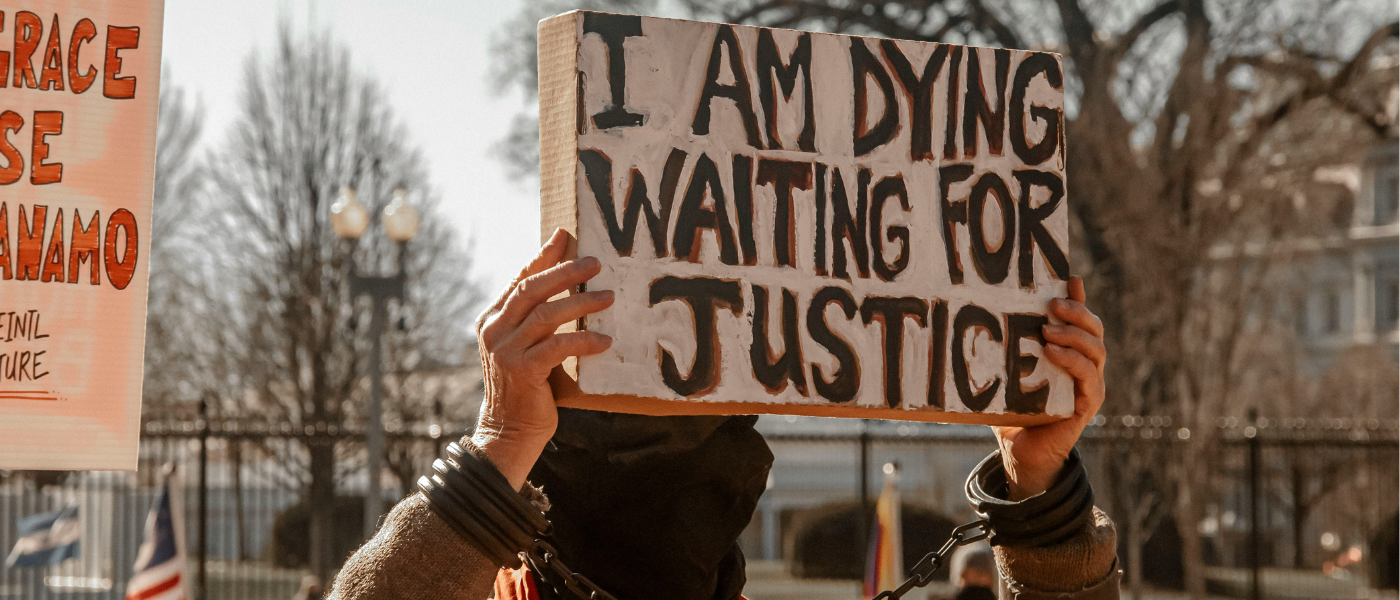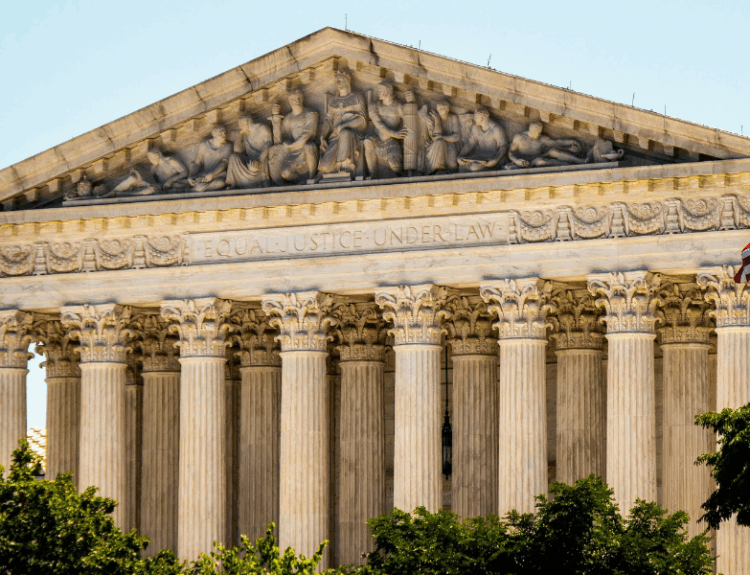The world has been running justice systems based on the principle of punishment over the centuries. Perpetrators are punished by the classic method, arrest, trial, sentence, incarceration or fine, and no one remembers the needs of the victims and the communities that have been victimized by the crime. But a lot has changed in the justice systems of the world, (and in the U.S. too) in recent years and the general attitude that has been adopted to deal with this problem. An emerging movement known as Restorative Justice has started questioning the belief that punishment is either effective or humane in itself. The aim of this practice is not only to punish the offenders but also to restore harm, empower the victims and build community bonds.
Restorative justice is not a mere utopian idea. It is becoming very popular today in schools, juvenile systems, and even in adult criminal courts. In a number of high-profile cases, governments, nonprofits, and educators have adopted restorative justice as a more humane solution. For example, in North Carolina, where the family of Donald Fields Jr. chose forgiveness over punishment.
This growing trend raises important questions: What is restorative justice, how can it be used to strengthen community relations, and what are some recent cases where it has made a difference?
What is Restorative Justice?
Restorative justice is a framework of values and actions that develops a different approach to crime and its effects. Restorative justice is meant to deal with the dehumanization that individuals are usually subjected to when they are in the hands of the criminal justice system. A criminal offense is not merely considered as the breach of a rule or a statute, but as the breach of the basic rights of a person and a relationship.
Restorative justice aims at establishing what can be done to repair the damage that a crime has created, and at the same time, the person who committed the crime is held accountable. In the United States, this approach has been adopted across juvenile justice systems, community programs, and even some adult criminal courts. It emphasizes that offenders must take responsibility for their actions and make meaningful efforts to compensate victims and restore community trust. As Howard Zehr, one of restorative justice’s leading scholars in the U.S., puts it:
“Restorative justice requires, at minimum, that we address victims’ harms and needs, hold offenders accountable to put right those harms, and involve victims, offenders, and communities in this process.”
Outcomes are intended to minimize the risk of future reoffending by addressing the causes of an offense and healing the damage. The success of the restorative justice interventions depends on the level of the damage that is restored, not on the punishment that is imposed. This is an additional advantage of restorative justice the victims and survivors of a crime are involved in the justice process. Unlike a procedure that seeks to punish the perpetrator, restorative justice seeks to repair the damages that the victims have suffered. Restorative justice allows the victims to be more active than the traditional justice systems. The role of community members in the restorative process is significant since they establish norms of behavior, hold the offender accountable, support all parties, and offer means of restoring harm.
The Reason Restorative Justice Is Popular
The conventional justice systems that are based on punishment are increasingly being criticized because they fail to curb recidivism and reform criminals. The fact that prisons are overcrowded and recidivism rates are high in some cases, reaching 70% is an indication that the current models are not always successful in their intended results, and most criminals, once they leave prison, commit the same crime.
Conversely, RJ programs have significantly lower recidivism rates, which is an effective case in favor of reform. As an illustration, a study conducted by the European Forum of Restorative Justice indicates that offenders who undergo RJ are much less likely to engage in new offences than those who go through the traditional courts.
Public Demand for More Transparency
There is both top-down and grassroots momentum in the increasing number of governments and community organizations trying out restorative models. Australia, New Zealand, Canada, the United States, and other jurisdictions have implemented RJ programs in many contexts, including juvenile diversion, school discipline, adult criminal courts, and sexual violence.
Here are some notable examples:
Australia
- Youth Koori Court: Aboriginal youth court with elders for culturally informed rehabilitation.
- Youth Justice Conferencing: Meetings for young offenders, victims, and families to decide on restitution.
New Zealand
- Project Restore: Survivor-led restorative justice for sexual violence cases.
Canada
- CoSA: Circles supporting reintegration of high-risk offenders.
- Victim-Offender Mediation: Direct mediation between victims and offenders in criminal cases.
United States
- RSVP (San Francisco): Jail-based program reducing violent reoffending through restorative dialogue.
- Cure Violence (NYC): Community mediation to prevent shootings and violence.
Evidence-Based Results
Measurable benefits are indicated in recent academic and governmental studies. These are lower recidivism, higher satisfaction of the victims, more community engagement and cost-saving. Consequently, restorative justice is gaining traction in legislative halls, courtrooms, and in the streets as a possible alternative or addition to punitive justice.
Victims at the Center
Most importantly, restorative justice allows the victims to take center stage in the process. Instead of being relegated as mere observers, the victims are able to tell their stories, articulate their needs and even be involved in determining how the offenders can pay their dues. This victim-centered approach is especially vital in sensitive cases such as sexual violence, where RJ has demonstrated the power to facilitate healing, closure, and agency in ways that traditional criminal proceedings often cannot.
What Does Restorative Justice Look Like?
Restorative justice is an approach to resolving conflict and harm that focuses on repairing relationships and meeting the needs of all parties involved. There are a number of models and practices of restorative justice that seek to hold offenders accountable and repair relations between them and the victims. Common approaches are:
- Victim-Offender Mediation: Planned meetings between the harming individual and the offending individual with the help of a trained mediator, who enables victims to describe the effect of the crime and the offenders to accept responsibility.
- Family and Community Conferencing: Wider groups composed of family members, community representatives and even law enforcement, that focus on assisting both sides and the community in healing and resolution.
- Circles of Support and Accountability (CoSA): support networks of high-risk offenders, especially sexual offenders, which are intended to facilitate reintegration and prevent recidivism.
- Transformative and Online Models: Emerging adaptations include new online applications of RJ, including the Australian Open Circle, and online tools to address online bullying and community issues, like ApoloBot.
Foundational Principles of Restorative Justice
Every restorative justice model has some common values:
- Voluntary Participation: The victim and the offender have to consent to participation.
- Respect and Confidentiality: The discussions are organized, respectful, and in many cases confidential.
- Community Involvement: The community at large is identified as the cause of harm and the victim of the same.
- Repair Over Retribution: It is not only about apportioning blame and/or punishing, but rather about making things right.
Real-World Examples and Case Studies of Restorative Justice
Criminal Case
Among the most prominent recent cases, one can mention the incident in Brooklyn, New York, in April 2025. City Council Member Susan Zhuang had charges against her dismissed after she completed a restorative justice program following an assault incident with an NYPD officer. Rather than going to trial, Zhuang had a mediated conversation with the victim. The procedure led to the understanding of each other, an official apology, and eventually the dropping of charges, which was an indication of a move towards accountability and community-based resolution even in high-stakes cases.
Sexual Violence Case
Restorative justice is penetrating into some of the most complicated and delicate fields of law, sexual violence. The Australian Capital Territory (ACT) reported that 90% of the participants of RJ conferences, including victims of sexual assault, felt respected and supported. These programs are well-designed to guarantee the safety and empowerment of the victims and offer them a different route to recovery that does not involve the retraumatizing process of a criminal trial.
Youth Behavior Change
Restorative justice works especially well in the case of young offenders. RJ conferencing programs in Queensland, Australia have resulted in 59% of the youth involved not reoffending in six months, a radical change compared to the traditional juvenile justice methods. Tasmania has also put money into restorative practices, including programs like community bike workshops to keep at-risk youth busy and out of more serious crime.
Transforming in Schools
RJ is gaining popularity in schools in the United States in order to break the so-called school-to-prison pipeline. The Clayton County Model in Georgia, which was introduced in 2003, showed impressive outcomes: the number of juvenile court referrals decreased by 67%, the graduation rates grew by 20%, and the number of suspensions dropped by 8%. With the emphasis on dialogue, mediation, and relationship-building, schools are creating an environment in which students are less prone to offending and more prone to succeeding.
What the Research Shows About Restorative Justice
a. Reducing Recidivism
There is a large amount of evidence to support the effectiveness of RJ in the prevention of reoffending. Meta-analyses conclude that restorative programs have the potential to decrease repeat offending by 7-45%, depending on the situation and type of crime. In sexual offense cases, CoSA program attendance has resulted in as much as 80% reduction in recidivism rates as compared to the forecasted rates of similar offenders.
b. Improved Victim Satisfaction
Victim satisfaction is always high in restorative justice. Research shows that over 85% of the victims who undergo RJ processes are satisfied with the result. Victims have been known to feel heard, respected and safer against future harm, unlike the victims who are involved in the traditional criminal proceedings.
c. Cost Savings and Efficiency
RJ can save a lot of resources by diverting offenders out of court and prison. Evaluations of such programs as the credible messenger programs in Cincinnati have demonstrated that community-based, restorative programs are not only effective but also less expensive than incarceration and continued court involvement.
Advantages of Restorative Justice
1. Psychological Healing
Restorative justice helps the victims to get closure and start healing through the expression of their feelings. It has been found that victims who participate in restorative justice processes experience less anxiety, depression, and PTSD compared to victims of traditional justice processes. The aim of restorative justice is to restore the autonomy of the victims by giving them a voice and an opportunity to be heard.
2. Victim Self-empowerment
In restorative justice, the victims are empowered by being involved in the decision-making process. Through dialogue and active contribution to the creation of justice, victims feel empowered and become active agents. The empowerment may lead to a more favorable outcome and a reduced feeling of victimization. In restorative justice, the victims are not passive recipients of justice but are considered as active participants in the justice process.
3. Accountability and Responsibility of Offenders
The offenders who participate in restorative justice are urged to take responsibility for their actions and to compensate the victims of their crimes. When offenders are made to face the consequences of their actions, they learn to be responsible and understand the effects of their actions and do not think of doing it again.
4. Individual Development and Rehabilitation
In addition to making offenders accountable, restorative justice facilitates rehabilitation and self-development. The root causes of crime are dealt with in restorative justice programs and resources and support are given to help the offenders to get back into society. The people who have undergone transformative change due to restorative justice programs offer strong evidence of their capacity to assist in breaking the cycle of crime.
5. Strengthen Relationships
In restorative justice, victims, offenders, and communities are able to comprehend and empathize with one another. Creating an environment that encourages dialogue and involves all stakeholders can lead to the repair and restoration of relationships. A more tightly knit community develops a sense of shared responsibility for building safer and more cohesive neighborhoods through this process.
Challenges and Critiques of Restorative Justice
Despite its promise, restorative justice is not a panacea. There are legitimate concerns about its limits:
1.Financial concerns
Enabling communication between the victims and the offenders. Assisting offenders to access the social services they require to put their lives back on track. Training employees about restorative practices. It is impossible to deny the fact that these activities, along with so many others, demand time and money, which is why some have wondered whether a restorative justice system is financially viable. Nevertheless, despite these legitimate concerns, advocates of restorative justice believe that it is less expensive to run a restorative system in the long run.
2. Balance between Restorative Justice and Traditional Justice
The most important thing in the application of restorative justice in the administration of criminal justice is to get the right balance between the restorative and traditional justice models. Even though restorative justice encourages compassion and rehabilitative effects, there are cases where retributive justice is needed to safeguard the community and enforce the law.
The application of restorative justice as an alternative to punishment in instances of severe crimes has been criticized as it may be more significant to deter and retaliate. It is important to balance these two methods by taking into consideration the kind of offense committed, the needs of the victim and the rehabilitation of the offender.
3. Developing a just and uniform procedure
Restorative justice is also hard to apply in all cases in a consistent and fair manner. This is because, given that restorative justice programs usually target the unique needs of the individuals, similar cases may be handled differently and this creates a sense of injustice. Restorative justice programs may lose their effectiveness when they are seen as giving special treatment to specific victims or offenders.
Best Practices for Implementing Restorative Justice
1. Creating a system of restorative justice
The practice of restorative justice can only be successfully realized when there is a clear and detailed framework that defines the aims, procedures, and results of the practice. The development of this restorative justice framework should include input from key stakeholders, including criminal justice professionals, victim advocates, community leaders, and policymakers.
Frameworks should:
- Identify the crimes that are eligible for restorative justice.
- Identify the inclusion criteria.
- Put in place mechanisms that will enable victim-offender communication.
2. Training of practitioners regarding restorative justice
Restorative justice education and training are required by facilitators of restorative justice processes. The facilitator should be a good communicator, culturally competent, and conversant with trauma-informed practices. They should be trained on conflict management, facilitation of challenging conversations, and ensuring the safety of both the victim and the offender during the process.
For students interested in entering this field, pursuing a degree in Criminal Justice with a specialty in Restorative Justice is recommended. For example, the University of North Carolina at Greensboro offers a Restorative Justice concentration within their Criminal Justice program
3. Community Support Development
Community support is also significant in the effective execution of restorative justice. There is a chance that restorative justice programs may fail to achieve legitimacy and involvement without community support. To develop this support, we must teach our community about restorative justice and deal with any misconceptions they might hold. Local organization partnerships, community forums, and community awareness campaigns create interest and buy-in within a community.
Will Restorative Justice Continue to Spread in the Future?
It is anticipated that restorative justice will continue to expand around the world because research continues to demonstrate that it lowers recidivism, enhances victim satisfaction and builds community confidence. Australia, New Zealand, the UK, and numerous cities in the U.S. have implemented restorative practices into the legal and school systems, with the European Forum of Restorative Justice and government agencies reporting positive results and increased implementation.
In spite of this development, there are still challenges. Restorative programs may be restricted by political opposition and unreliable funding, particularly in regions where punitive measures are popular. Nevertheless, with more studies still pointing out its advantages, restorative justice will probably remain an even greater component of justice systems all over the world.
Conclusion
Restorative justice is no longer an experiment; it is a proven strategy that has demonstrated remarkable outcomes in curbing crime, enhancing victim empowerment and community healing. In Australia, juvenile courts, in the US, school districts, and in the new online world, RJ is proving that justice does not always have to be about punishment. It may be about righting the wrongs.
With the increasing cost of justice systems across the world, high rates of recidivism and an ever-increasing demand by citizens to see more humane approaches to justice, restorative justice provides a roadmap to the future. Its further growth will demand political determination, community dedication, and the undeterred attention to the requirements of the individuals who are most impacted by the damage. After all, restorative justice is not about being soft on crime; it is about being smart, being compassionate, and most importantly, being just.
Criminal Justice 101: An Overview of the U.S. System








